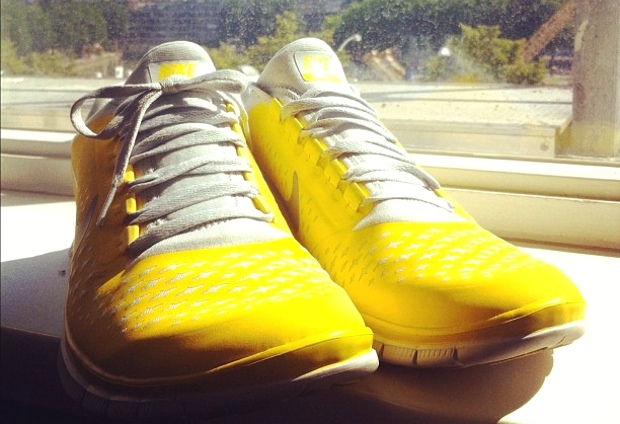Okay, people, we get it. You love your minimalist running shoes. You have a pair of Nike Frees in almost every neon color imaginable, and fingers crossed there’ll be a pair of New Balance Minimus Zeros under the Christmas tree for you.
But at about $100 a pop, minimalist shoes are not cheap, and are mostly geared toward one sport: running. But more and more these days we’re seeing regular gym-goers rock their minimalist kicks during personal training sessions or boot camp. Still, as the market grows, the research on minimalist shoes’ benefits for cross-training remains even more scarce than for running.
Here’s the good news, though, especially for CrossFit and P90X addicts: While the jury is still out, one local podiatrist says minimalist shoes work just as well for cross-training in general as for running. “The bottom line is, the minimalist shoes have become the shoe for cross-training,” says Dr. Howard Osterman, a spokesperson for the American Podiatric Medical Association and team podiatrist for the Washington Wizards and Mystics.
Osterman says minimalist shoes offer our feet more flexibility than typical cross-training shoes. “Historically, what happened with the cross trainer is we enforced the forefoot and rear foot, with a cutout in the middle [of the shoe],” he explains. This allows the foot to move laterally and to pivot, which is ideal when playing sports like basketball or tennis. But, he says, over time that design has led the cross trainer to become “fraught with complications.”
What complications? Injuries that “came from motions that were not necessarily anatomically correct,” Osterman explains. Minimalist shoes, on the other hand, are more forgiving, since their design is based on foot structure versus shoe structure.
As with running, wearing minimalist shoes while cross-training can help strengthen the ankles and feet. “Trying to use a minimalist shoe will build musculature,” says Osterman. The obvious benefit of that, of course, is less chance of injury.
Of course, therein lies the controversy with minimalist shoes, since people tend to blame the shoes for the injury, instead of the poor implementation, he says. “Where [minimalist shoes] become problematic is with our longstanding patients who have had a history of plantar fasciitis and Achilles tendonitis, and are trying to figure out a way to get out of orthotics and their regular shoes.”
In addition, it’s worth noting that cross-training workouts such as CrossFit are high intensity—and high impact. Therefore, Osterman says, it’s probably best to stick with minimalist shoes that still have some heel for shock absorbance—not barefoot running shoes such as Vibram FiveFingers. Almost every running company, including Nike and New Balance, has broken minimalist shoe lines into different heel heights, whether it’s 15 millimeters or 6.
While Osterman doesn’t wear minimalist shoes himself due to recent knee surgery, he can offer some recommendations for minimalist shoes based on foot structure. New Balance or Brooks minimalist shoes tend to feel more comfortable on those with a wide forefoot. On the other hand, Nike Frees and Adidas Adipures are best for those with narrow heels and high arches.
Finally, and especially if you’ve suffered hamstring, calf, or Achilles injuries, it’s essential that you seek professional help when trying a minimalist shoe for the first time. “Have a program designed for you by a sports medicine professional,” Osterman says. “Do it smartly so you don’t get injured.”
“There’s a concern amongst the public that medical professionals ‘pooh-pooh’ [minimalist shoes],” he adds. “But anything done with moderation and smart training can be beneficial.”



















